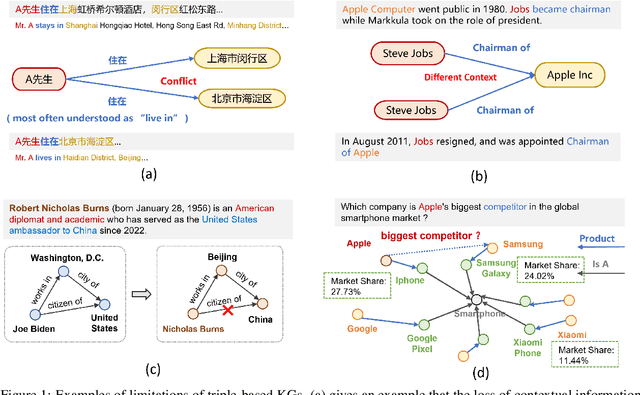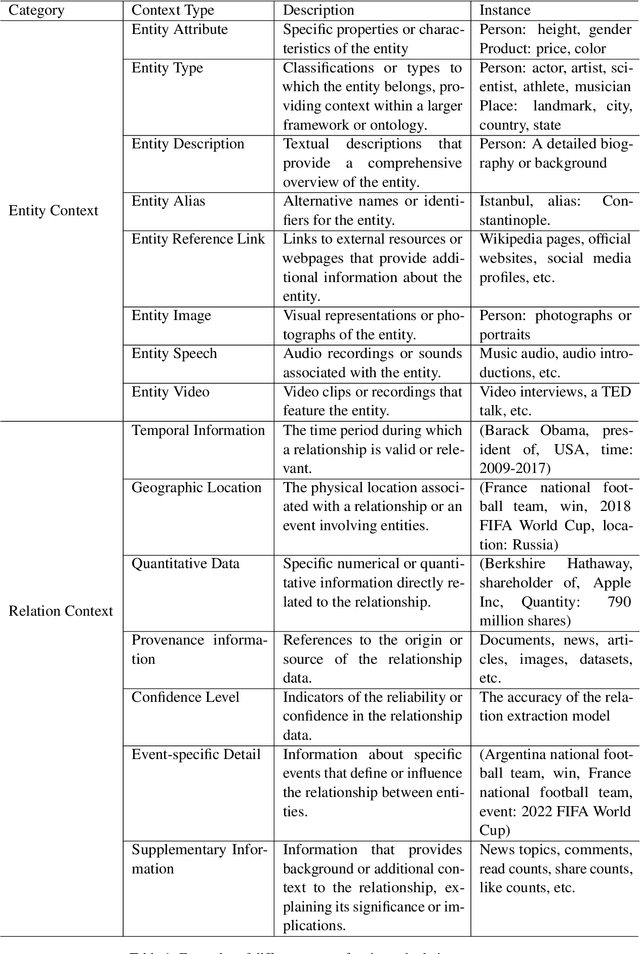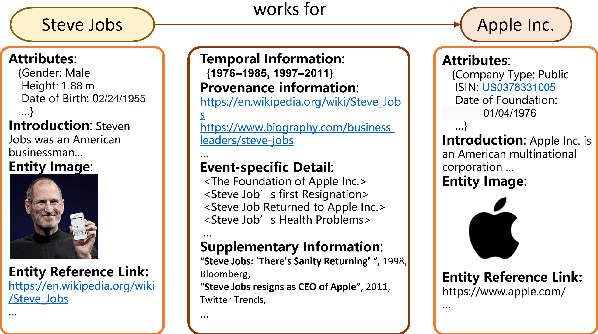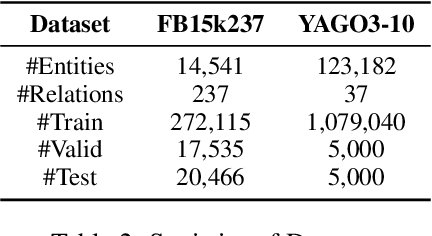Lumingyuan Tang
Beyond Forecasting: Compositional Time Series Reasoning for End-to-End Task Execution
Oct 08, 2024



Abstract:In recent decades, there has been substantial advances in time series models and benchmarks across various individual tasks, such as time series forecasting, classification, and anomaly detection. Meanwhile, compositional reasoning in time series is prevalent in real-world applications (e.g., decision-making and compositional question answering) and is in great demand. Unlike simple tasks that primarily focus on predictive accuracy, compositional reasoning emphasizes the synthesis of diverse information from both time series data and various domain knowledge, making it distinct and extremely more challenging. In this paper, we introduce Compositional Time Series Reasoning, a new task of handling intricate multistep reasoning tasks from time series data. Specifically, this new task focuses on various question instances requiring structural and compositional reasoning abilities on time series data, such as decision-making and compositional question answering. As an initial attempt to tackle this novel task, we developed TS-Reasoner, a program-aided approach that utilizes large language model (LLM) to decompose a complex task into steps of programs that leverage existing time series models and numerical subroutines. Unlike existing reasoning work which only calls off-the-shelf modules, TS-Reasoner allows for the creation of custom modules and provides greater flexibility to incorporate domain knowledge as well as user-specified constraints. We demonstrate the effectiveness of our method through a comprehensive set of experiments. These promising results indicate potential opportunities in the new task of time series reasoning and highlight the need for further research.
Context Graph
Jun 28, 2024



Abstract:Knowledge Graphs (KGs) are foundational structures in many AI applications, representing entities and their interrelations through triples. However, triple-based KGs lack the contextual information of relational knowledge, like temporal dynamics and provenance details, which are crucial for comprehensive knowledge representation and effective reasoning. Instead, \textbf{Context Graphs} (CGs) expand upon the conventional structure by incorporating additional information such as time validity, geographic location, and source provenance. This integration provides a more nuanced and accurate understanding of knowledge, enabling KGs to offer richer insights and support more sophisticated reasoning processes. In this work, we first discuss the inherent limitations of triple-based KGs and introduce the concept of CGs, highlighting their advantages in knowledge representation and reasoning. We then present a context graph reasoning \textbf{CGR$^3$} paradigm that leverages large language models (LLMs) to retrieve candidate entities and related contexts, rank them based on the retrieved information, and reason whether sufficient information has been obtained to answer a query. Our experimental results demonstrate that CGR$^3$ significantly improves performance on KG completion (KGC) and KG question answering (KGQA) tasks, validating the effectiveness of incorporating contextual information on KG representation and reasoning.
Contextual Knowledge Graph
Jun 21, 2024



Abstract:Knowledge Graphs (KGs) are foundational structures in many AI applications, representing entities and their interrelations through triples. However, triple-based KGs lack the contextual information of relational knowledge, like temporal dynamics and provenance details, which are crucial for comprehensive knowledge representation and effective reasoning. Instead, \textbf{Contextual Knowledge Graphs} (CKGs) expand upon the conventional structure by incorporating additional information such as time validity, geographic location, and source provenance. This integration provides a more nuanced and accurate understanding of knowledge, enabling KGs to offer richer insights and support more sophisticated reasoning processes. In this work, we first discuss the inherent limitations of triple-based KGs and introduce the concept of contextual KGs, highlighting their advantages in knowledge representation and reasoning. We then present \textbf{KGR$^3$, a context-enriched KG reasoning paradigm} that leverages large language models (LLMs) to retrieve candidate entities and related contexts, rank them based on the retrieved information, and reason whether sufficient information has been obtained to answer a query. Our experimental results demonstrate that KGR$^3$ significantly improves performance on KG completion (KGC) and KG question answering (KGQA) tasks, validating the effectiveness of incorporating contextual information on KG representation and reasoning.
Move Beyond Triples: Contextual Knowledge Graph Representation and Reasoning
Jun 17, 2024



Abstract:Knowledge Graphs (KGs) are foundational structures in many AI applications, representing entities and their interrelations through triples. However, triple-based KGs lack the contextual information of relational knowledge, like temporal dynamics and provenance details, which are crucial for comprehensive knowledge representation and effective reasoning. Instead, \textbf{Contextual Knowledge Graphs} (CKGs) expand upon the conventional structure by incorporating additional information such as time validity, geographic location, and source provenance. This integration provides a more nuanced and accurate understanding of knowledge, enabling KGs to offer richer insights and support more sophisticated reasoning processes. In this work, we first discuss the inherent limitations of triple-based KGs and introduce the concept of contextual KGs, highlighting their advantages in knowledge representation and reasoning. We then present \textbf{KGR$^3$, a context-enriched KG reasoning paradigm} that leverages large language models (LLMs) to retrieve candidate entities and related contexts, rank them based on the retrieved information, and reason whether sufficient information has been obtained to answer a query. Our experimental results demonstrate that KGR$^3$ significantly improves performance on KG completion (KGC) and KG question answering (KGQA) tasks, validating the effectiveness of incorporating contextual information on KG representation and reasoning.
On the Evolution of Knowledge Graphs: A Survey and Perspective
Oct 10, 2023



Abstract:Knowledge graphs (KGs) are structured representations of diversified knowledge. They are widely used in various intelligent applications. In this article, we provide a comprehensive survey on the evolution of various types of knowledge graphs (i.e., static KGs, dynamic KGs, temporal KGs, and event KGs) and techniques for knowledge extraction and reasoning. Furthermore, we introduce the practical applications of different types of KGs, including a case study in financial analysis. Finally, we propose our perspective on the future directions of knowledge engineering, including the potential of combining the power of knowledge graphs and large language models (LLMs), and the evolution of knowledge extraction, reasoning, and representation.
Think-on-Graph: Deep and Responsible Reasoning of Large Language Model with Knowledge Graph
Jul 15, 2023



Abstract:Large language models (LLMs) have made significant strides in various tasks, yet they often struggle with complex reasoning and exhibit poor performance in scenarios where knowledge traceability, timeliness, and accuracy are crucial. To address these limitations, we present Think-on-Graph (ToG), a novel framework that leverages knowledge graphs to enhance LLMs' ability for deep and responsible reasoning. By employing ToG, we can identify entities relevant to a given question and conduct exploration and reasoning to retrieve related triples from an external knowledge database. This iterative procedure generates multiple reasoning pathways consisting of sequentially connected triplets until sufficient information is gathered to answer the question or the maximum depth is reached. Through experiments on complex multi-hop reasoning question-answering tasks, we demonstrate that ToG outperforms existing methods, effectively addressing the aforementioned limitations of LLMs without incurring additional training costs.
 Add to Chrome
Add to Chrome Add to Firefox
Add to Firefox Add to Edge
Add to Edge